- James Cook tied the league lead in rushing touchdowns: He was tied with Derrick Henry and Jahmyr Gibbs for the most rushing touchdowns last season despite earning noticeably fewer carries than the two other backs.
- Will his contract situation impact his play?: The Buffalo Bills extended several players but not Cook. This could motivate Cook to have his best season yet, but it could also lead to a holdout and missing time.
- Subscribe to PFF+: Get access to player grades, PFF Premium Stats, fantasy football rankings, all of the PFF fantasy draft research tools and more!
Estimated Reading Time: 5 minutes

PFF’s Fantasy Football Player Profile series delivers the most in-depth fantasy football analysis available for the 2025 season.
Using PFF’s exclusive data, we evaluate player performance, competition for touches and how teammates and coaching staffs will impact each player’s fantasy football outlook.
Last updated: 7:15 a.m. Saturday, May 17
Player performance
James Cook was a backup in his first season with the Buffalo Bills after being drafted in the second round. He did a great job of breaking out long runs that let the team be comfortable enough to make him the starter.
In 2023, Cook was a respectable fantasy starter, finishing at RB19 in points per game and 12th in total points. He still did a nice job of making long runs but wasn’t hitting home runs nearly as often. Cook’s production in the passing game translated to a larger sample size, although he also dropped more passes and fumbles, which hurt his grade.
Cook’s big problem was his rushing touchdown total. When the Bills were on the one-yard line, Josh Allen ran the ball six times, other running backs on the roster ran the ball seven times, and Cook ran the ball once, resulting in a touchdown. Similarly, from the two-to-five-yard range, Allen ran eight times, other running backs rushed the ball nine times, and Cook ran four times for no scores.
Cook graded better in 2024 than 2023 but was given fewer opportunities. He fumbled the ball less, dropped fewer passes and earned more 15-plus-yard runs, which helped his grade and EPA. His receiving production was noticeably hurt by fewer snaps in two-minute drills and on third downs. However, he more than made up for it with his touchdown totals. The Bills moved on from Latavius Murray and Leonard Fournette, who were both taller, bigger backs that made sense at the goal line, allowing Cook more opportunities. He ran the ball four times from the one-yard line, leading to three touchdowns. Cook also ran 11 of a possible 20 times from the two-to-five-yard line, leading to another four touchdowns. While other running backs received a few carries each, it was notable that Allen ran less often in these situations.
Cook also ran for nine touchdowns when he was six or more yards away from scoring, which tied Saquon Barkley for the league lead. That was just the most for a running back this past season, but most by a back in a season since 2008, also tying Derrick Henry in 2019. Most of the backs on the leaderboard were among the league leaders in carries for their season, and Cook wasn’t anywhere close to that mark. While Cook should still see plenty of short touchdowns and a few long ones, this number should regress pretty significantly. The high rushing touchdown did help him to 0.95 fantasy points per rushing attempt, which led the league last season.
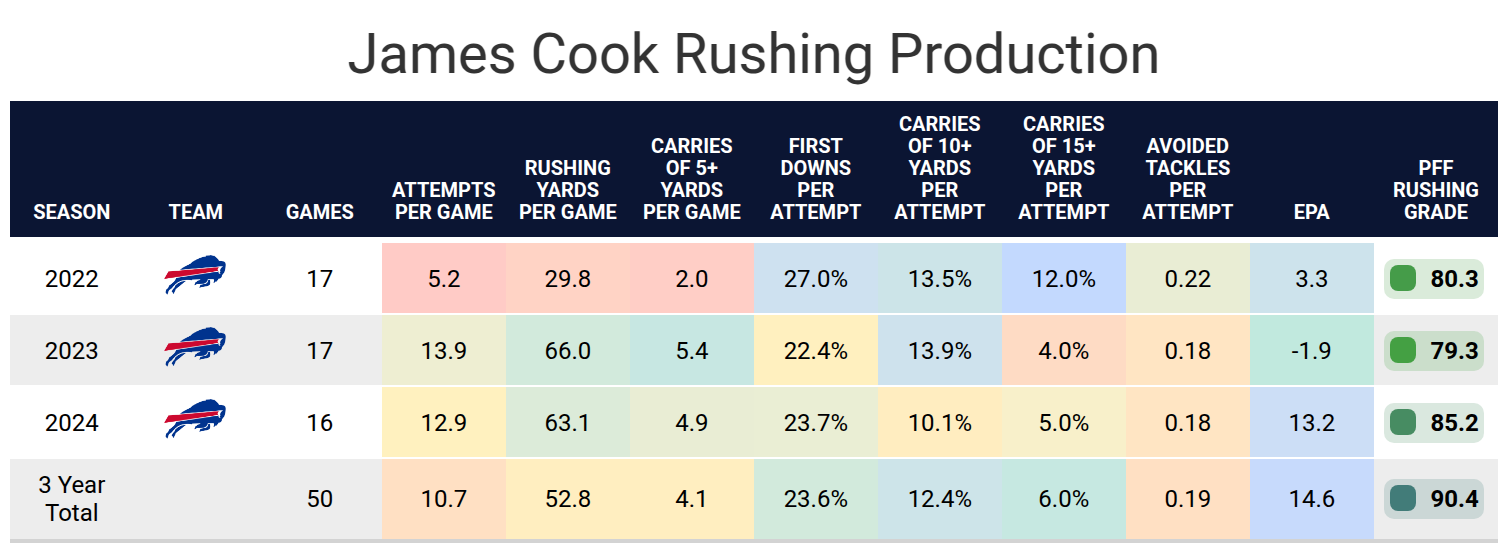

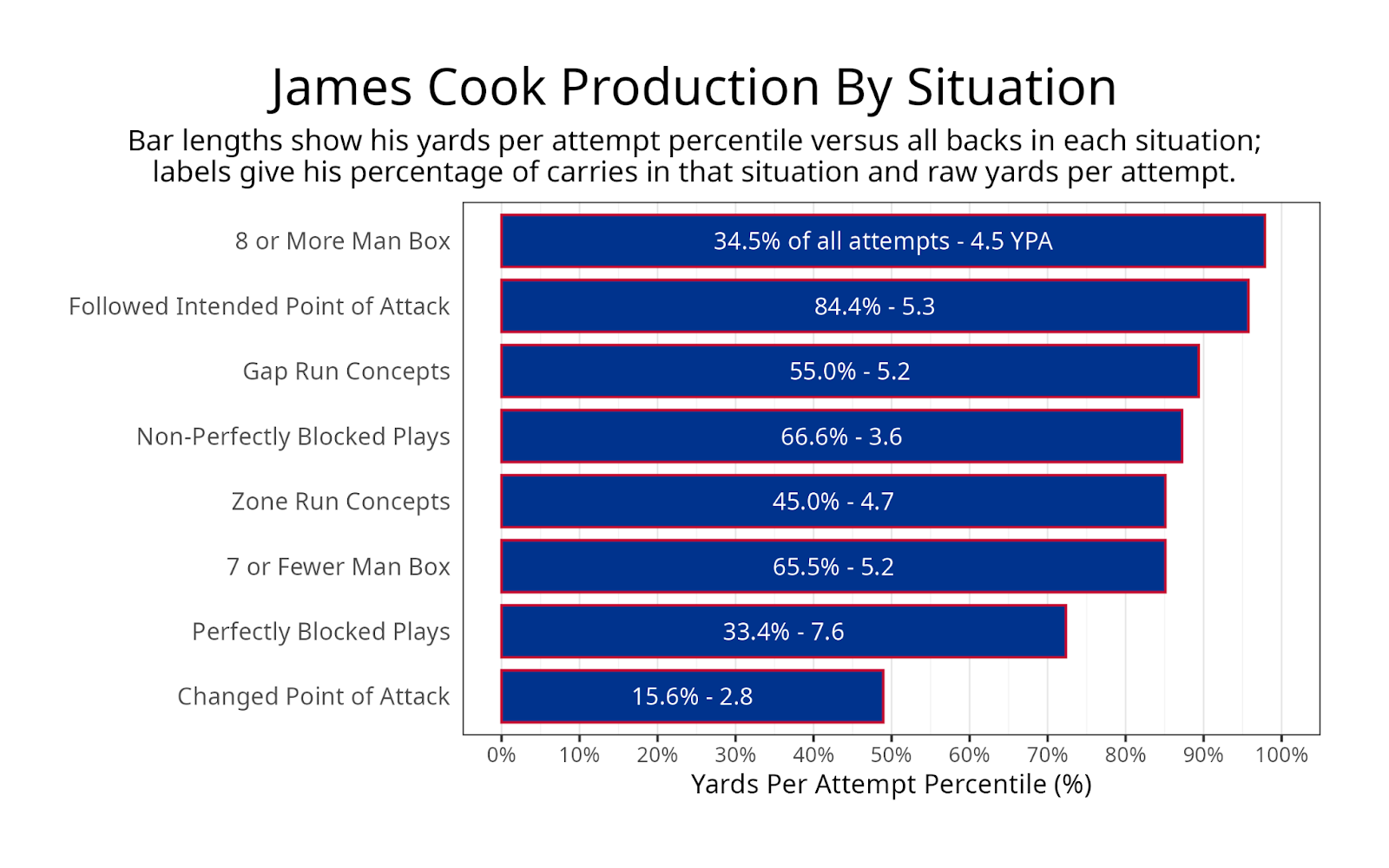
Projected role
The Bills kept the same three running backs as last season, so we can expect the players to be generally in the same roles. The team brought back Darrynton Evans, fullback Reggie Gilliam and practice squad player Frank Gore Jr., so even the blockers and insurance policies are familiar faces.
One question is whether Ray Davis can earn a larger role. His usage was very consistent throughout the season, often playing between 10-20 snaps per game, more often in wins than losses, and doing a great job in Cook’s absence in Week 6. While Davis made a few big plays throughout the season, Cook graded notably better and doesn’t appear to be in danger of losing significant snaps. He was already pretty well rested last season, as Ty Johnson took more passing-down work than the year before while Davis played roughly two drives per game. If anything, based on player grades, we should expect Cook to see more opportunities this season.
The Bills spent a lot of the offseason re-signing their own players, including Josh Allen, Khalil Shakir, Terrel Bernard, Greg Rousseau, Reid Ferguson and Christian Benford, but that didn’t include Cook, who is entering the final season of his contract. We’ve seen players play particularly well in contract years so they can earn a larger contract, and we’ve also seen players hold out, which has led to either missing time during the season or not playing as well due to the holdout. It’s possible the Bills work Cook extra hard this season because they know they won’t re-sign him, or they could also play Davis more to see if Davis could handle the workload if they don’t re-sign Cook. The holdout adds to the variability around Cook’s fantasy production this season.
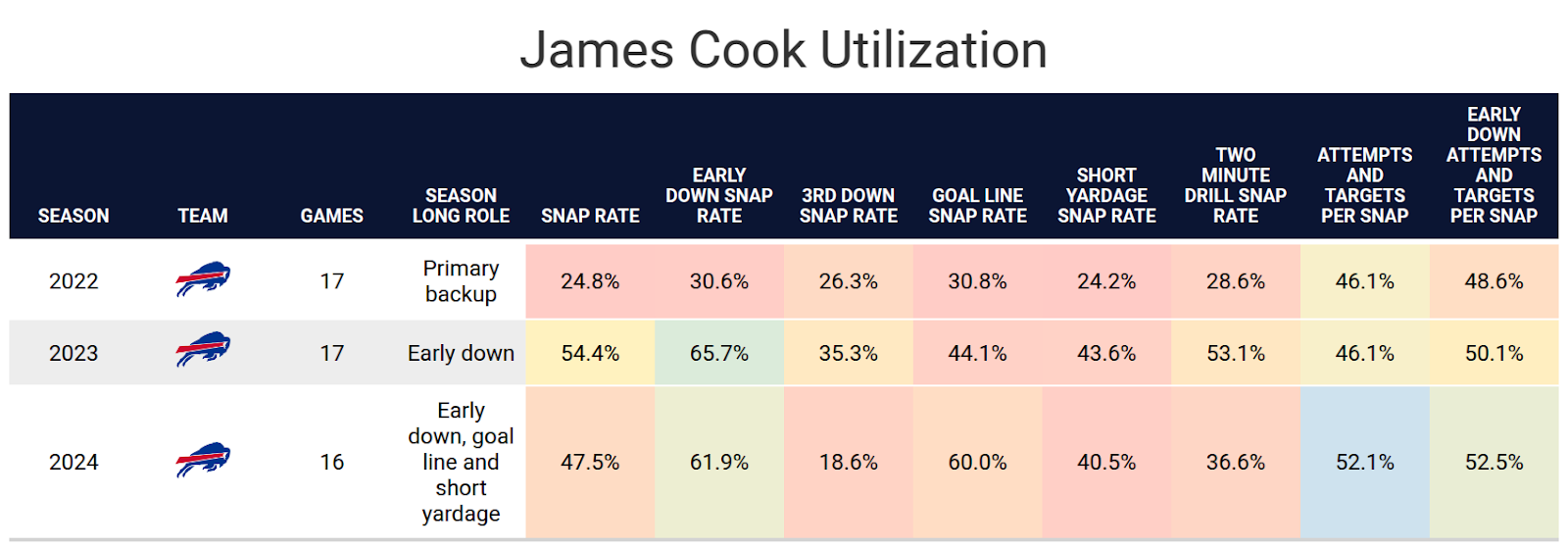
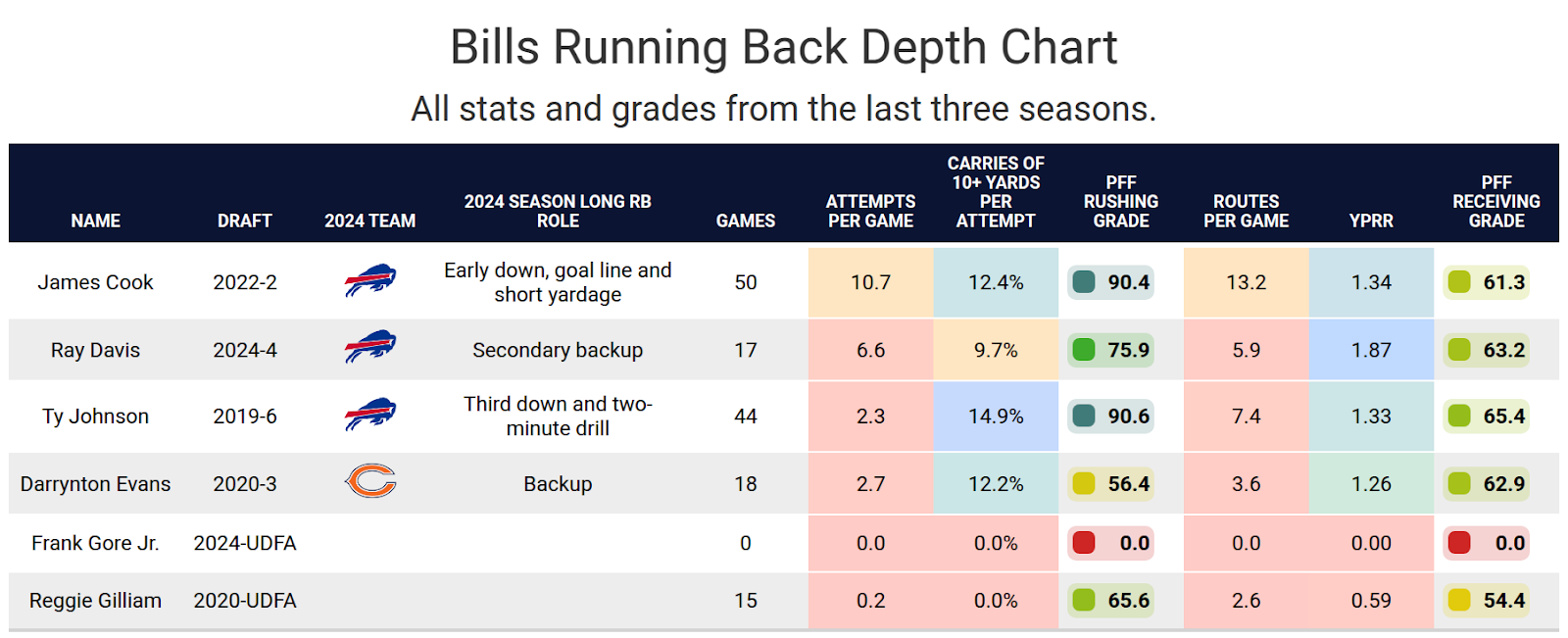
Impact of teammates
Cook will continue playing under Joe Brady as his offensive coordinator. The change to Brady has likely helped more than it has hurt Cook’s fantasy value. The team became much more balanced under Brady, leading to a lot more rushing attempts. However, Brady has also shifted the Bills further toward a committee approach. Ideally, Cook could be a feature back in a balanced offense, but Cook is still generally producing more fantasy value than Devin Singletary did before Cook took over. Cook generally benefits from playing in one of the highest-scoring offenses, where game scripts are almost always in his favor and defenses need to focus on Josh Allen.
The Bills’ offensive line was generally above-average run blockers last season. The line stayed healthy last season, as everyone played in at least 18 of the possible 20 games, and the five starters are all returning this season. Center Connor McGovern and right tackle Spencer Brown made noticeable improvements last season. Generally, when lines play more snaps together, they tend to improve. However, there is also a decent chance they won’t have as much luck when it comes to injuries this time around.
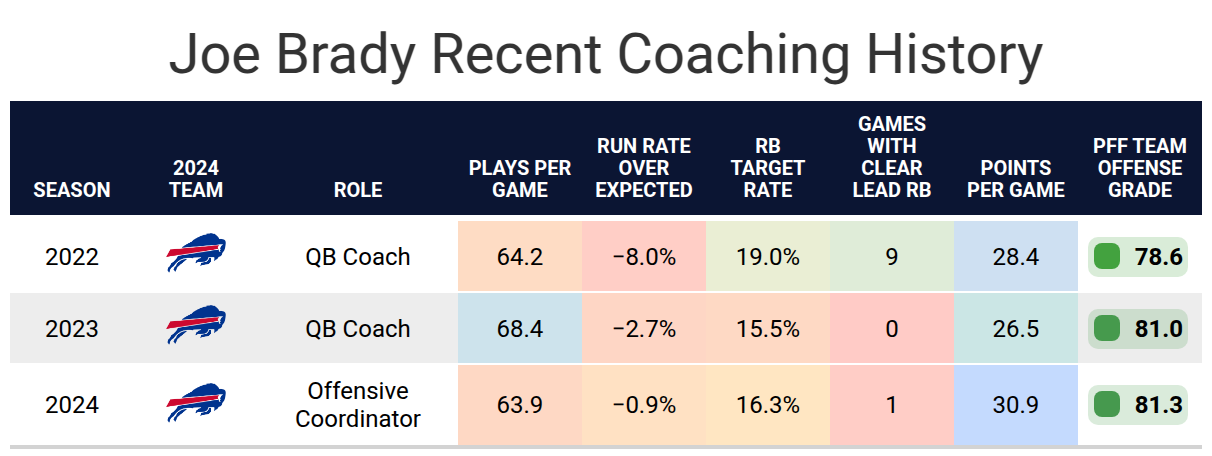
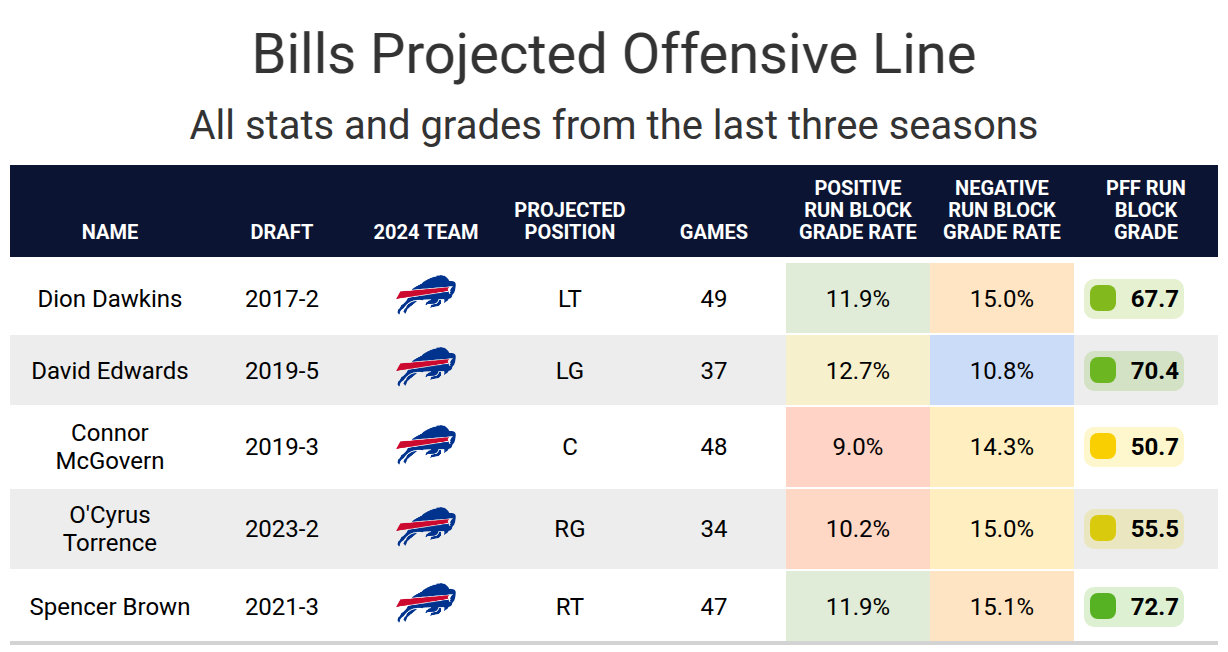
Bottom line
Cook’s rushing touchdown was extremely low in 2023 and high in 2024. His fantasy value this season will likely be somewhere in between, making him a relatively safe RB2 option.

Footnotes
- Statistics in tables and charts were chosen based on their ability to predict future fantasy performance on a per-game or per-opportunity basis or to describe the player relative to others at the same position.
- “Opportunities” are defined as passing dropbacks, rushing attempts and routes run as a receiver.
- Numbers are provided either by season or based on the past three years. For rookies, only college statistics are included. For non-rookies, only NFL statistics are considered, regardless of whether they played in college within the previous three years.
- As college competition is easier than NFL competition, most rookies are likely to see a decline from their historical numbers.
- Only FBS data is considered for college players and comparisons.
- Kneel-downs are removed from rushing data to provide cleaner quarterback rushing rate statistics.
- The table colors in this article range from blue (indicating good/high) to red (indicating bad/low).
- All percentiles and color codings compare the given player to others with a high sample of opportunities. Generally, the cutoff is one-third of the possible opportunities in the sample. If a player does not meet the threshold, they are still included in the comparison, though their results may appear better or worse than expected due to the smaller, less predictive sample size.
- Information on utilization classifications and their importance can be found here for running backs, wide receivers and tight ends.
This news was originally published on this post .




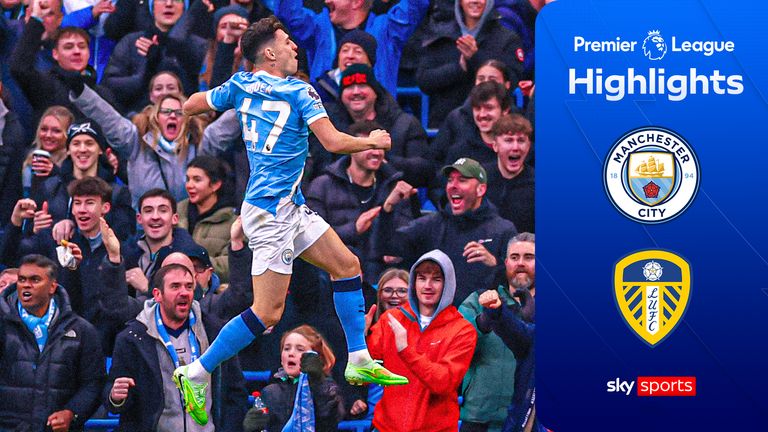
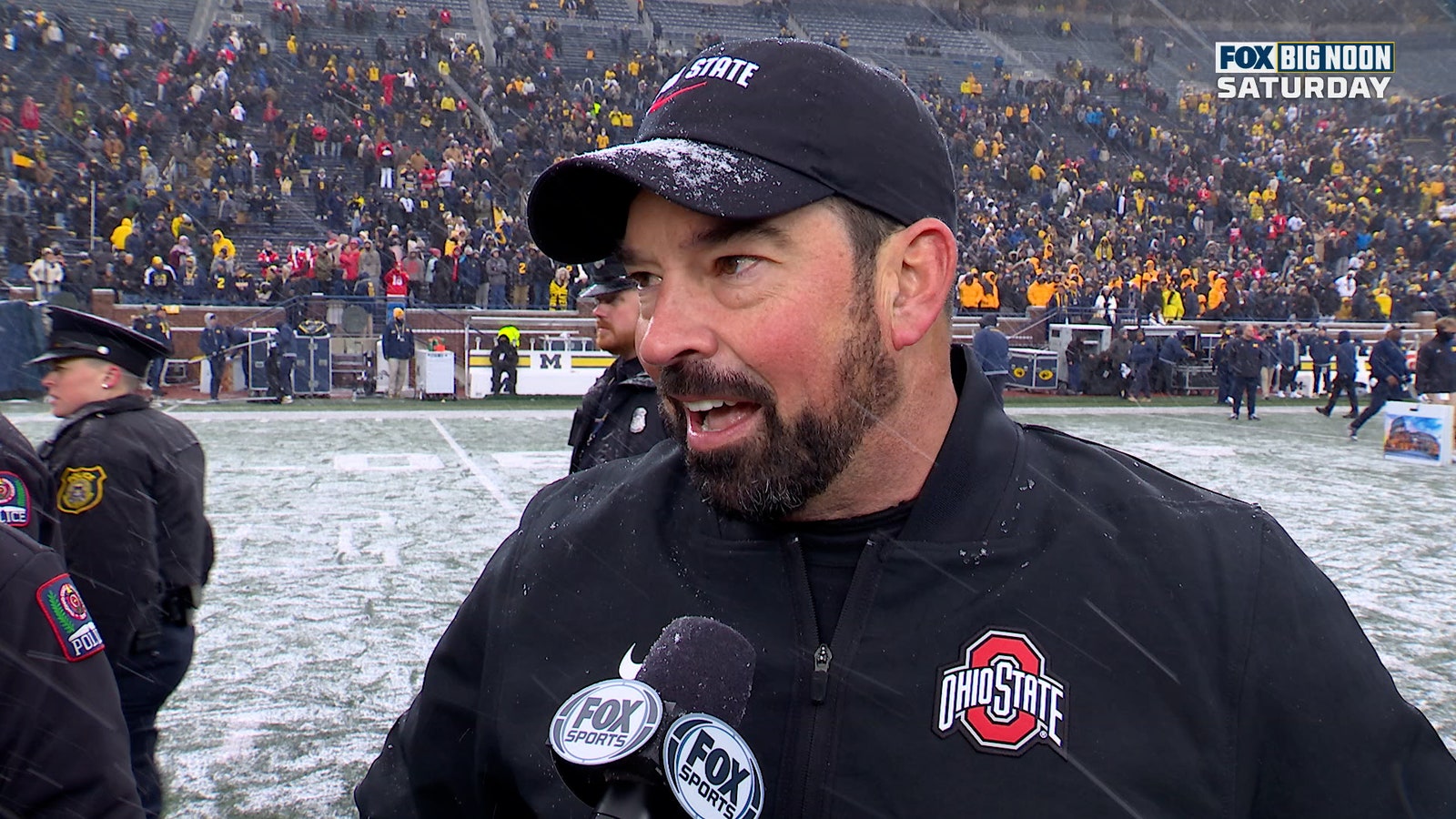

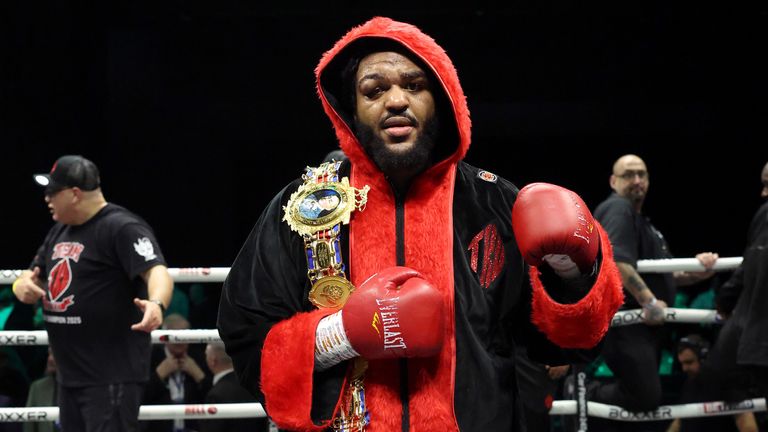

Be the first to leave a comment